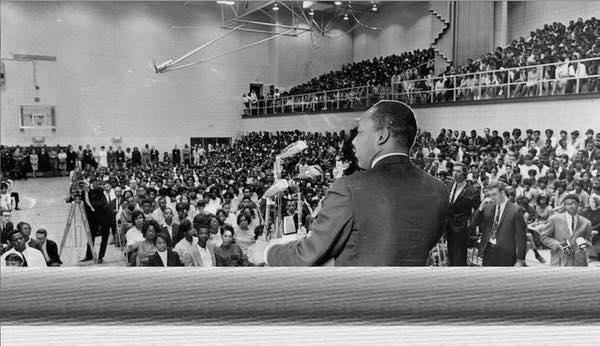
Cleveland doesn’t come up too often in the histories of the Civil Rights Movement of the 50s and 60s. Many of the highest profile events, protests and battles occurred in the South where racism was overt and oppressive.
But many Clevelanders were active in the movement. There was organizing in local churches, community centers and businesses such as funeral homes that were hubs of the Black community. Dr. Martin Luther King Jr. spoke in town many times, while local activists such as lawyer Stanley Tolliver, the Rev. Odie M. Hoover Jr., and Pastor Theophilus Caviness rallied the troops on a daily basis. And in 1967 Cleveland became the first major city to have a Black mayor, when Carl Stokes was elected.
An organization called the Cleveland Civil Rights Trail is working to keep this history alive and educate subsequent generations about Cleveland’s role in the movement.
“Every major city contributed to the strength of the Civil Rights Movement, Cleveland included,” they say. “The African American Civil Rights Trail creates an immersive retelling of our city, from the earliest days of the movement to the major events that helped shape national change.”
The trail is self-guided tour of civil rights landmarks such as Cory United Methodist Church, Glenville High School, Olivet Institutional Baptist Church, the Ludlow Community Association and the location where the Hough Uprising started. Their website provides copious information about what occurred at each location, including oral histories and further reading. Go here to get started.